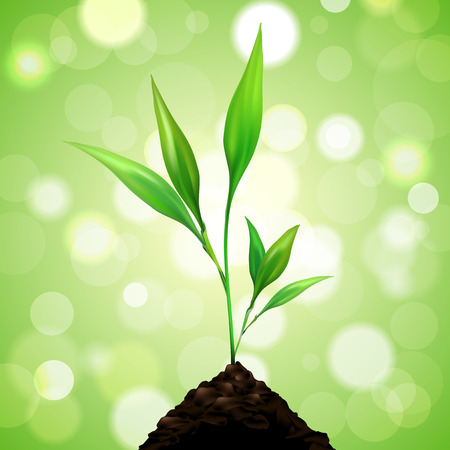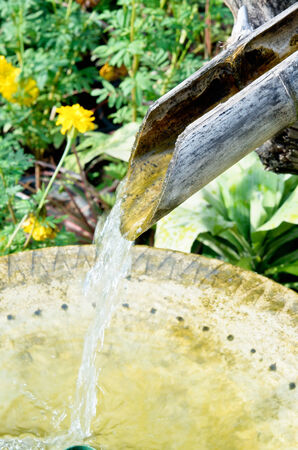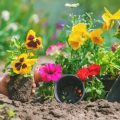Introduction to Rainwater Harvesting
Rainwater harvesting is the practice of collecting and storing rainwater for later use, especially in home gardens. It’s a simple, eco-friendly method that more and more gardeners across the United States are adopting. With growing concerns about water conservation and sustainable living, rainwater harvesting has become an attractive option for people who want to reduce their environmental impact while nurturing their plants.
At its core, rainwater harvesting involves capturing rain that falls on rooftops or other surfaces, channeling it through gutters, and storing it in containers like barrels or cisterns. This stored water can then be used to irrigate lawns, flower beds, vegetable patches, and even indoor plants. Not only does this reduce reliance on municipal water systems, but it also saves money on utility bills and helps manage stormwater runoff.
Home gardeners are finding that harvested rainwater is often better for plants than treated tap water. Since its free from chlorine, fluoride, and other chemicals commonly found in city water supplies, rainwater supports healthier soil and plant growth. In many regions across the U.S., where droughts or water restrictions are becoming more common, having a personal supply of water makes gardening more resilient and reliable.
Here’s a quick look at why rainwater harvesting is gaining popularity:
| Benefit | Description |
|---|---|
| Water Conservation | Reduces dependence on municipal water supplies by using naturally available rainwater. |
| Cost Savings | Lowers water bills by supplementing irrigation with free rainwater. |
| Plant Health | Provides chemical-free water that’s often better for soil microbes and plant roots. |
| Sustainability | Supports eco-friendly gardening practices by reusing natural resources efficiently. |
As sustainability continues to be a priority in American households, especially among those who enjoy growing their own food or maintaining green spaces, rainwater harvesting offers a practical solution that blends environmental responsibility with everyday gardening needs.
2. Legal Considerations by State
Rainwater harvesting is a sustainable and practical solution for home gardeners across the U.S., but the legality of collecting rainwater varies from state to state. Some states encourage it with incentives, while others have specific rules or permitting requirements that homeowners must follow. Understanding these regulations helps ensure your rainwater harvesting system is compliant with local laws.
Overview of State Regulations
While many states allow rainwater harvesting with minimal restrictions, a few have more detailed guidelines. The table below provides a snapshot of how different U.S. states handle rainwater collection:
| State | Is Rainwater Harvesting Legal? | Restrictions/Requirements |
|---|---|---|
| California | Yes | No permit needed for non-potable use; must comply with plumbing code for certain systems |
| Texas | Yes | Encouraged by law; tax incentives available; must be used on the property where collected |
| Colorado | Yes (with limits) | Homeowners can collect up to 110 gallons; only from rooftops and for outdoor use |
| Utah | Yes (with registration) | Up to 2,500 gallons allowed with free online registration |
| Oregon | Yes | Collection allowed from rooftops only; must not impact public water rights |
| Nevada | No (mostly restricted) | Rainwater harvesting is generally prohibited unless specifically permitted for research or pilot projects |
| Arizona | Yes | No permit needed for residential use; encouraged through rebates in some cities like Tucson |
| Washington | Yes | No permit required if water is used on-site; must not impair existing water rights |
States That Encourage Rainwater Harvesting
Certain states go beyond simply allowing rainwater collection—they actively promote it. For example, Texas offers tax exemptions on rainwater harvesting equipment, and Arizona municipalities like Tucson provide rebates for installation costs. These programs aim to reduce demand on municipal water supplies and support drought resilience.
Common Incentives Include:
- Tax Credits: Some states offer deductions or exemptions on sales tax for purchasing rain barrels and cisterns.
- Rebates: Local governments may provide cash-back incentives after installing approved systems.
- Zoning Flexibility: Certain areas allow variances to install larger storage tanks or modify landscaping to accommodate catchment systems.
Navigating Local Rules and Permits
If youre planning to install a rainwater harvesting system, its important to check both state and local regulations. Some cities or counties may have their own codes that require permits, especially if you intend to connect the system to indoor plumbing or store large volumes of water. Contact your local building department or extension office to get accurate guidance.
Tips for Staying Compliant:
- Start Small: Use a simple barrel system before investing in large tanks.
- Avoid Cross-Connections: Dont mix harvested water with drinking water supplies unless professionally installed and permitted.
- Keep It Clean: Use screens and first-flush diverters to prevent debris from entering your storage tank.
- Label Clearly: Mark all storage containers as “Non-Potable Water” if theyre not treated for drinking use.
The legal landscape around rainwater harvesting continues to evolve as states recognize its environmental benefits. Staying informed about your local regulations ensures your home garden remains both eco-friendly and lawful.

3. Harvesting Techniques and Systems
There are many ways to collect and store rainwater at home, ranging from simple DIY setups to more advanced systems that integrate with your existing garden irrigation. Choosing the right method depends on your budget, space, and how much water you want to capture.
Basic Rain Barrel Setups
Rain barrels are the most common and beginner-friendly option for harvesting rainwater. These containers are usually placed under downspouts to collect runoff from rooftops.
Key Features of Basic Rain Barrels:
- Capacity ranges from 30 to 100 gallons
- Equipped with a spigot for filling watering cans or attaching hoses
- Often include a mesh screen to keep out debris and mosquitoes
This setup is ideal for homeowners who want a low-cost, low-maintenance way to water flower beds or potted plants.
Intermediate Systems: Linked Barrels and First Flush Diverters
If youre looking to store more water or improve water quality, consider linking multiple barrels together or adding a first flush diverter. A first flush system diverts the initial flow of dirty rooftop water away from your storage container.
Benefits of Intermediate Systems:
- Larger storage capacity without large tanks
- Improved water cleanliness
- Still relatively easy to install and maintain
Advanced Systems: Cisterns, Filtration, and Irrigation Integration
For those serious about sustainability or living in drought-prone areas, advanced systems offer more control and efficiency. These setups can include underground cisterns, filtration units, pumps, and automated irrigation controllers.
| System Type | Description | Best For |
|---|---|---|
| Cisterns (Above or Below Ground) | Large tanks that hold hundreds to thousands of gallons of rainwater. | Homes with large roofs or gardens; long-term storage needs |
| Pump-Assisted Delivery | Pumps move collected water through garden irrigation systems. | Lawn sprinklers, drip irrigation, timed watering schedules |
| Filtration Units | Screens, sand filters, or UV treatment improve water quality for plant use. | Avoiding clogs in irrigation lines; reducing contaminants for sensitive plants |
Selecting the Right System for Your Needs
Your ideal rainwater harvesting system depends on factors like local rainfall patterns, garden size, state regulations, and how hands-on you want to be. Even a single barrel can make a big difference over time—saving money on your water bill and reducing runoff in your neighborhood.
4. Benefits for Home Gardeners
Collecting and using rainwater in your home garden isn’t just a smart way to save water—it also brings a wide range of environmental, economic, and horticultural benefits. Let’s break down how this sustainable practice can make a big difference for gardeners across the U.S.
Environmental Benefits
Rainwater harvesting helps reduce runoff, which can carry fertilizers, pesticides, and other pollutants into local waterways. By capturing rain before it hits the ground, you’re helping prevent erosion and protecting nearby streams and rivers.
- Reduces stormwater runoff: Helps avoid flooding and protects soil structure.
- Supports groundwater recharge: Allows more water to soak into the ground instead of flowing away.
- Lowers demand on municipal systems: Reduces pressure on city water supplies during dry spells.
Economic Benefits
Using rainwater in your garden can lower your utility bills and reduce your dependence on treated tap water. Over time, these savings can really add up—especially if you live in an area with high water rates or frequent droughts.
| Benefit | Description |
|---|---|
| Lower water bills | You use less city water for irrigation. |
| Avoidance of drought surcharges | No extra charges during restricted watering periods. |
| Long-term savings | A one-time investment in a rain barrel system pays off over time. |
Horticultural Benefits
Your plants will thank you for using rainwater. Unlike treated tap water, which may contain chlorine or fluoride, rainwater is naturally soft and free from chemicals that could harm sensitive plant roots. It also has a balanced pH that suits most garden plants.
- Softer water = healthier plants: No chemical additives means better soil life and root health.
- Nutrient-friendly: Rainwater often contains trace minerals absorbed from the atmosphere that benefit plant growth.
- Biodiversity booster: Encourages beneficial insects and microbes in your garden ecosystem.
A Quick Comparison: Tap Water vs. Rainwater for Gardening
| Tap Water | Rainwater | |
|---|---|---|
| Chemical Additives | Often includes chlorine or fluoride | Chemical-free and gentle on plants |
| TDS (Total Dissolved Solids) | Tends to be higher, can build up in soil over time | Tends to be low, ideal for long-term soil health |
| Potted Plants Impact | Might cause salt buildup in containers | No salt buildup; great for container gardening |
A Win-Win for Gardeners and Nature
No matter where you live—from California’s dry climate to the rainy Southeast—harvesting rainwater offers practical advantages that go beyond simple savings. It’s a win-win for your wallet, your plants, and the planet.
5. Best Practices and Maintenance
To make the most of your home rainwater harvesting system, proper maintenance is key. Whether you live in a rainy part of the Pacific Northwest or a drier state like Arizona, keeping your system clean and running smoothly will ensure safe water for your garden and help your setup last for years.
Regular Maintenance Tips
A little upkeep goes a long way. Here are some basic maintenance tasks to keep your system in top shape:
| Task | How Often | Why Its Important |
|---|---|---|
| Clean gutters and downspouts | Monthly or after storms | Prevents debris from entering the system |
| Check and clean filters/screens | Every 1-2 months | Maintains water flow and quality |
| Inspect tank for leaks or cracks | Seasonally | Avoids water loss and damage to nearby areas |
| Flush out tank sediment | Twice a year | Keeps water cleaner and extends pump life (if used) |
Ensuring Water Quality for Your Garden
If youre using harvested rainwater on edible plants, its essential to keep it clean. Here are a few tips:
- Use a first-flush diverter: This device redirects the first flow of rainwater, which may carry dust, pollen, or bird droppings off your roof.
- Keep collection surfaces clean: Sweep your roof or collection area regularly.
- Avoid chemical treatments: Unless recommended by your local extension office, don’t add chemicals to stored water used for gardening.
Maximizing System Longevity and Garden Efficiency
The better your system performs, the more youll save on utility bills and water use over time. Here’s how to get the most from it:
- Select UV-resistant tanks: These last longer under sun exposure common in states like Texas or California.
- Install overflow protection: Direct excess water away from foundations to prevent flooding during heavy rains.
- Add drip irrigation connections: A great way to automate watering with minimal waste—especially helpful during summer dry spells.
- Monitor usage: Keep track of how much rainwater you collect versus use. This can help improve efficiency and guide future upgrades.
Tip:
If youre in a colder state like Minnesota or Colorado, be sure to winterize your system—drain tanks and disconnect hoses before the first freeze to avoid cracking or damage.
Your Local Extension Office Can Help
If youre unsure about specific guidelines in your area, contact your local Cooperative Extension Service. They offer region-specific advice on everything from plant care to rainwater safety regulations.
With a little planning and consistent care, your rainwater harvesting system can become an eco-friendly asset that keeps your home garden thriving all year long.


